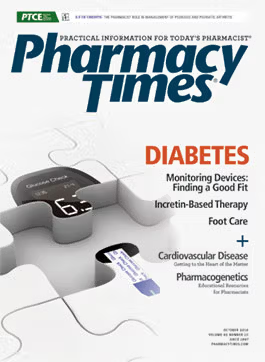Publication
Article
Pharmacy Times
Hope for the Future of Opiate Addiction
Author(s):
If the opiate addiction problem were easy to solve, it would have been over long ago, and whoever found the solution would be wealthy beyond imagination.
The news on opiate addiction is usually bleak at best. Hundreds of articles, including some of mine, discuss addiction and overdose death with no apparent “light at the end of the tunnel.” My current employer, Brown County Ohio, leads Ohio’s list of top counties per capita for unintentional overdose drug deaths! It’s hard to accept that this is the situation in a sparsely populated rural county in southern Ohio, but it’s a snapshot of the problem in Ohio and well beyond.
About 2 years ago, I was at a conference where I learned about a new drug called Vivitrol. It seemed promising that a once-monthly injection could render an addicted individual unable to achieve a high. Along with counseling and an addict’s willingness to receive a monthly injection for many months, Vivitrol could result in lasting sobriety. It sounded too good to be true. The only hurdles were that addicts must be willing to participate and must not use their drug for several days before administration of Vivitrol. In addition, the cost of the drug is $600 to $800 per injection. The Warren County Ohio jail has an ongoing project involving this drug, and the results have been sensational.
Another drug, called Probuphine, was recently approved by the FDA and shows even more promise, as it involves 4 upper-arm implants that last for 6 months! I couldn’t find information on the cost of this drug, but I would guess it isn’t cheap.
Counseling is essential with these drugs, and sobriety for several days before their administration is mandatory to allow maximum effectiveness. How do we get these patients through the worse flu-like symptoms they ever had, long enough to be eligible for these programs? Perhaps the answer is a new device, called the Neuro-Stim System Bridge, which assists addicts through the withdrawal period, allowing them to participate in the programs.1
Although I don’t have much information yet, I have been told by more than 1 source that a heroin vaccine is in the pipeline and, if it proves effective, would provide incredible hope for individuals addicted to opiates. As more data accrue on these products, time will tell how effective they are. So far, it seems to me these products are the most encouraging news we’ve had on the crushing problem of opiate addiction. Law enforcement has known for many years that we can’t arrest our way out of the problem, although enforcing the law still remains key to success in my opinion.
Effective drug rehabilitation is absolutely necessary for slowing the revolving door of addiction, sobriety, and relapses into addiction, again and again. This cycle can result in death and causes incredible collaborative damage to the friends and family of addicted individuals. The financial burden of rehabilitation has certainly been part of the problem, but if one or more of the products discussed here prove to be highly successful, I would guess that health insurers would be more likely to cover the costs. However, because of the high relapse rate of opiate addition, insurers are wary of covering the cost of rehabilitation, especially when failure is almost guaranteed at least one time.
If the opiate addiction problem were easy to solve, it would have been over long ago, and whoever found the solution would be wealthy beyond imagination. The truth is there’s no easy answer to the problem and even if these drugs and devices work, the crisis won’t be over. Nevertheless, the products discussed here provide a realistic hope for the world of opiate addiction. I’m sure other drugs and devices are being developed in the hope of resolving this growing crisis. Whatever helps is needed now!
Cmdr Burke is a 40-year veteran of law enforcement and the past president of the National Association of Drug Diversion Investigators. He can be reached by e-mail at [email protected] or via the website www.rxdiversion.com.
Reference
- Lloyd R. Device could aid heroin detox. The Daily Advocate website. dailyadvocate.com/features/health/15112/device-could-aid-heroin-detox. Published April 11, 2016. Accessed August 23, 2016.

Newsletter
Stay informed on drug updates, treatment guidelines, and pharmacy practice trends—subscribe to Pharmacy Times for weekly clinical insights.






